
CASEY REAS
KTTV
This documentation video captures a few minutes of a continuous, generative collage. The source for the collage is one hour of edited signals captured from KTTV (198 – 204 MHz @ 34°13′29″N, 118°3′47″W) in August 2015.
The sound was created by Philip Rugo
.
KTTV Cette vidéo de documentation capture quelques minutes d’un collage continu et génératif. La source du collage est une heure de signaux édités capturés par KTTV (198 – 204 MHz @ 34°13′29″N, 118°3′47″W) en août 2015.
Le son a été créé par Philip Rugo

Synichi Yamamoto, Seiichi Sega & Intercity-Express
Noesis
This project was made by inspiration from law of nature and cosmology such as, “View from Inner Earth” ”Wrapped up in Nothing” “Re-mix the Border” “Constructal Law” “Emerging Moments” “Universal Architecture”, and “Superstring Theory”.Science and art have been getting closer in media art scene. Visualization of data and visualization of wave shapes has been actively pursued.

SpY
DATA
In “DATA”, SpY offers a reflection on the rapid and widespread inclusion of algorithms in numerous aspects of our lives. In this audio-visual work, digital abstraction is used to explore and interpret how predictive tools operated through algorithms and artificial intelligence are highly beneficial in terms of aspects such as communication, research and medicine, but can also lead us to lose some of our freedoms if they are not used ethically.
Through this immersive audio-visual format, SpY explores new tools such as the holographic fabrics used to give the graphics an amazing sense of weightlessness. A 15-metre high screen made from this fabric was installed in one of Madrid’s smallest streets between the walls of the buildings.

Yasmin Whitlock
Yasmin Whitlock
“When you look into the work of designer Yaz Whitlock, you can’t help but notice the dichotomy: elements of fertility and celebrations of the placenta are blended into symbols of birth control.” Pedro Milanezi
.
“Lorsque vous examinez le travail du designer Yaz Whitlock, vous ne pouvez pas vous empêcher de remarquer la dichotomie: des éléments de fertilité et des célébrations du placenta sont mélangés dans des symboles de contrôle des naissances.” Pedro Milanezi

Alisa Andrasek
This research used stigmergy behaviour, another example of agency-based systems, which could be programmed to be highly adaptive to local data. What is most intriguing and attractive in this case, is contrasting organic aesthetics emerging from algorithms like stigmergy, with its plant like formations, and the hyper-rationalisation and genericity of voxelised geometry. Different resolutions were introduced in the facade panels, by using an octree algorithm. The result is a building skin that from afar looks like a plant, but in close up has almost Minecraft-like aesthetics coming from a multi-resolution voxel field. Organic stigmergy (stígma + ergon) partly plays a role in the distribution of data through the facade field, rather than generating geometry. It leaves its imprint in the density of geometry

Thijs Biersteker
Symbiosia
With the premiere of ‘Symbiosia’ we give two trees in the iconic garden of Fondation Cartier a visual voice about one of the most important topics of today, climate change. The work addresses the relationship of the trees with the visitors, the environment and each other. The real time data installation is a collaboration between artist Thijs Biersteker and world renowned botanist and scientist Stefano Mancuso and his International Laboratory of Plant Neurobiology in Florence. As a pioneer of plant neurobiology he is an advocate of the concept of plant intelligence. Mancuso provided the science behind the artwork.

TROIKA
ダークマター
「トロイカの形而上学的に奇妙なぶら下がっている彫刻ダークマター(2014)、立っている場所に応じて円、正方形、または六角形のように見える大きな黒いオブジェクトは、(オールドウォルバーのビデオのように)主観的な視点と客観的な真実。
.
Dark Matter, a large black object that looks like a circle, a square or a hexagon depending on where you’re standing, probes (like Olde Wolber’s video) a very contemporary disturbance about the irreconcilability of subjective point-of-view and objective truth.
.
Un grand objet noir qui ressemble à un cercle, un carré ou un hexagone selon l’endroit où vous vous trouvez, sonde (comme la vidéo d’Olde Wolber) une perturbation très contemporaine sur l’inconcilabilité du point de vue subjectif et de la vérité objective.

Denis Villeneuve
“Arrival’s narrative plays out in four languages: English, Mandarin, Russian and Heptapod. Though they are not spoken in the film, we learn that Louise is also fluent in Farsi, Sanskrit and Portuguese (and possibly others). The language learning process and the growing translingual bond between Louise and the heptapods forms the film’s narrative arc and the majority of its plot. Thus language, and specifically the mechanics of ←215 | 216→multilingualism, is Arrival’s central theme. Within this context, the ability to communicate across language barriers is an asset, and the flexibility to navigate new linguistic challenges is invaluable. The heptapods are pure science fiction, but serve a powerful metaphorical function. As Emily Alder (2016) writes in The Conversation, “ultimately, Arrival is less about communicating with the aliens than with each other – internationally but also individually […] The film’s message is that difference is not about body shape or colour but language, culture and ways of thinking. It’s not about erasing that difference but communicating through it”. Gemma King
.
语言学习过程以及路易丝与七足动物之间越来越多的跨语言联系形成了电影的叙事弧线和大部分情节。 因此,语言,尤其是←215的机制| 216→使用多种语言是到达中心的主题
.
Процесс изучения языка и растущая межъязыковая связь между Луизой и гептаподами составляют повествовательную дугу фильма и большую часть его сюжета. Таким образом, язык и, в частности, механика ← 215 | 216 → многоязычие – центральная тема Арривала.

Tromarama
Madakaripura
Digital image projection, software, real-time internet-based data, and sound
Installation shot at St. Saviour Church, London
Tromarama is an art collective founded in 2006 by Febie Babyrose, Herbert Hans and Ruddy Hatumena. Engaging with the notion of hyperreality in the digital age, their projects explore the interrelationship between the virtual and the physical world. Their works often combine video, installations, computer programming and public participation depicting the influence of digital media on the society perception towards their surroundings. They live and work between Jakarta and Bandung.

Irina Nakhova
Ирина Нахова
Pilot’s head
L’exposition russe présente une œuvre ambitieuse, intitulée «Le pavillon vert», à travers laquelle Irina Nakhova (née en 1955) interagit avec l’architecture du pavillon, conçu en 1913 par Aleksey Shchusev, également auteur du mausolée de Lénine à Moscou. à partir des «installations totales» d’Ilya Kabakov, et en poussant plus loin le concept exprimé dans ses propres installations «Rooms» des années 1980, Nakhova a mis en place cinq espaces, où une interaction complexe entre l’art, l’architecture et la perception du spectateur se développe de manière surprenante , exploitant ainsi le concept original de Shchusev, qui n’a pas conçu le pavillon comme un simple conteneur, mais comme un soutien actif à la créativité des artistes.
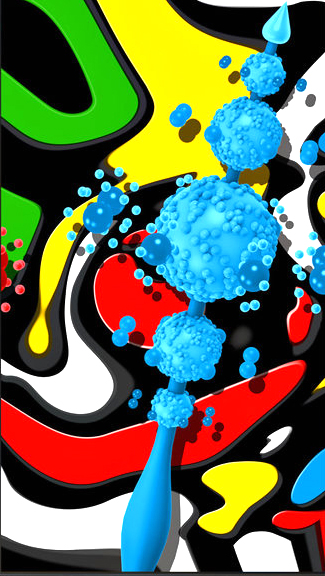
Tabor Robak
Blossom
l’artiste explore une réalité numérique secondaire, rendue dans ce qu’il appelle une «esthétique de tutoriel Photoshop» ou une «esthétique d’économiseur d’écran de bureau». Ses environnements méticuleusement produits et filmés sont bricolés à partir de sources à la fois échantillonnées et modélisées à la main. Les œuvres sont appropriatives, tant dans leur objet que dans leur esthétique, en utilisant des éléments achetés puis édités pour ses besoins.

HITO STEYERL
Factory of the sun
In this immersive work, which debuted at the 2015 German Pavilion at the Venice Biennale, Steyerl probes the pleasures and perils of image circulation in a moment defined by the unprecedented global flow of data. Ricocheting between genres—news reportage, documentary film, video games, and internet dance videos—Factory of the Sun uses the motifs of light and acceleration to explore what possibilities are still available for collective resistance when surveillance has become a mundane part of an increasingly virtual world. Factory of the Sun tells the surreal story of workers whose forced moves in a motion capture studio are turned into artificial sunshine.
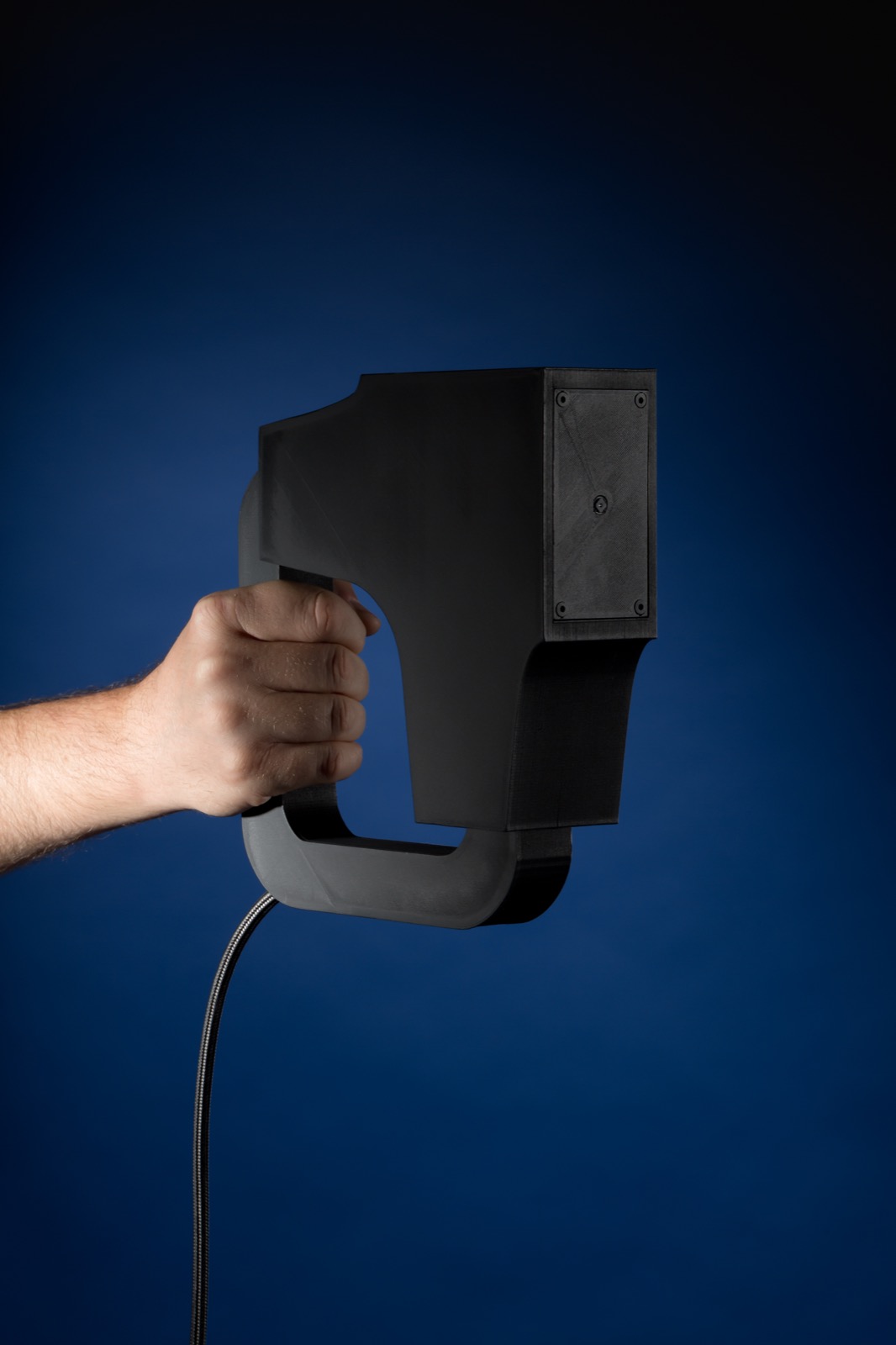
Marta Revuelta
AI Facial Profiling, Levels of Paranoia

Ying Yu
airmorphologies
Humans, as social beings, use language to communicate. The human voice, as a biometric authentication mechanism, is constantly used throughout daily life applications, such as speech recognition, speaker verification, and so on. Currently, language-based communications mainly fall into two categories: voice over air, and voice over internet protocol. Can we add a new dimension for voice communication such as a wearable material? If so, how could we shape matter in order to physicalize vocal information?
airMorphologiesis an interactive installation that uses soft materials, such as silicon, fabric, and air, to realize these physicalizations. The human voice controls the actuation of a soft wearable structure, changing the appearance of the human body.
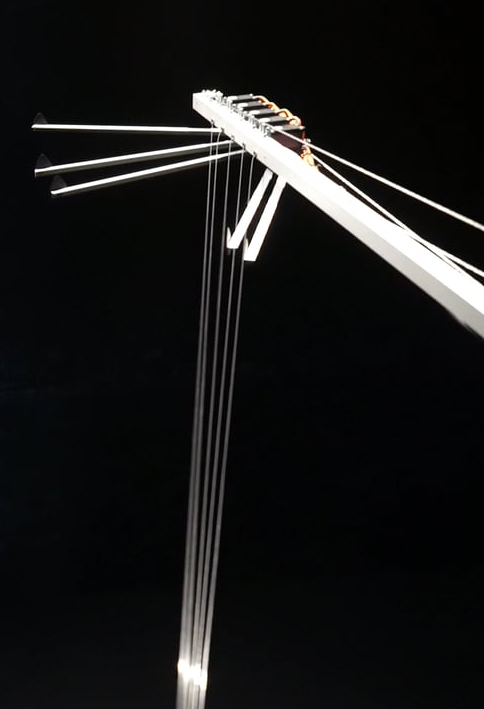
VTOL
Silk
The installation is tracking the real time changes in the market activities related to cryptocurrencies Bitcoin and Litecoin – independent and uncontrolled by any state peer-to-peer payment systems. Constantly changing currency rate of of Bitcoin against major world currencies is influencing the strain of strings in installation and the way the picks are hitting them. The robotic system of the artwork is directed by a computer algorithm: influenced by dynamic changes of data, the installation sounds like a complex sound instrument.
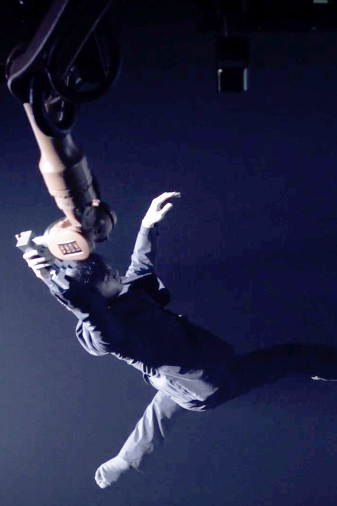
HUANG YI & KUKA
A DUET OF HUMAN AND ROBOT
Huang’s pioneering work is steeped in his fascination with the partnership between humans and robots. He interweaves continuous movement with mechanical and multimedia elements to create a form of dance which corresponds with the flow of data, effectively make the performer a dancing instrument.

mike winkelmann (Beeple)
迈克·温克尔曼
Майк Винкельман
minor peon
La cantidad no es lo mismo que la calidad, ya lo sabemos, pero el diseñador gráfico estadounidense Mike Winkelmann (alias Beeple) ha logrado hacer coincidir las dos cosas. Beeple, con su carácter autocrítico, decidió que la mejor manera de mejorar su talento artístico era completar una obra completa en un día, todos los días. Así nació el proyecto Everydays, que ya se encuentra en su octavo año consecutivo, y en 2015 la ciencia ficción es la principal inspiración. Cada año Beeple utiliza un medio diferente para crear sus obras artísticas, y este año el artista ha utilizado herramientas digitales como Cinema 4D, Octane Renderer, Z-Brush y X-Particles. En menos de 24 horas, Beeple es capaz de crear una ilustración digital hiperrealista que parece haber tardado mucho más en hacer. Los increíbles resultados resaltan paisajes y escenarios futuristas que parecen sacados de una película de ciencia ficción, donde hay un claro contraste entre la pequeñez de la figura humana (a veces casi imperceptible) y el aparato tecnológico que tiene frente a él. Otras obras, en cambio, representan formas más abstractas, que, sin embargo, nunca se apartan de su carácter futurista. Profundamente detallada y minuciosa, parece imposible que cada una de estas obras se cree y complete en un día, pero lo cierto es que la estadounidense El artista ya está en el 3030 de trabajo consecutivo y no parece querer frenar el ritmo. Es decir, es un artista reacio a la dilación.
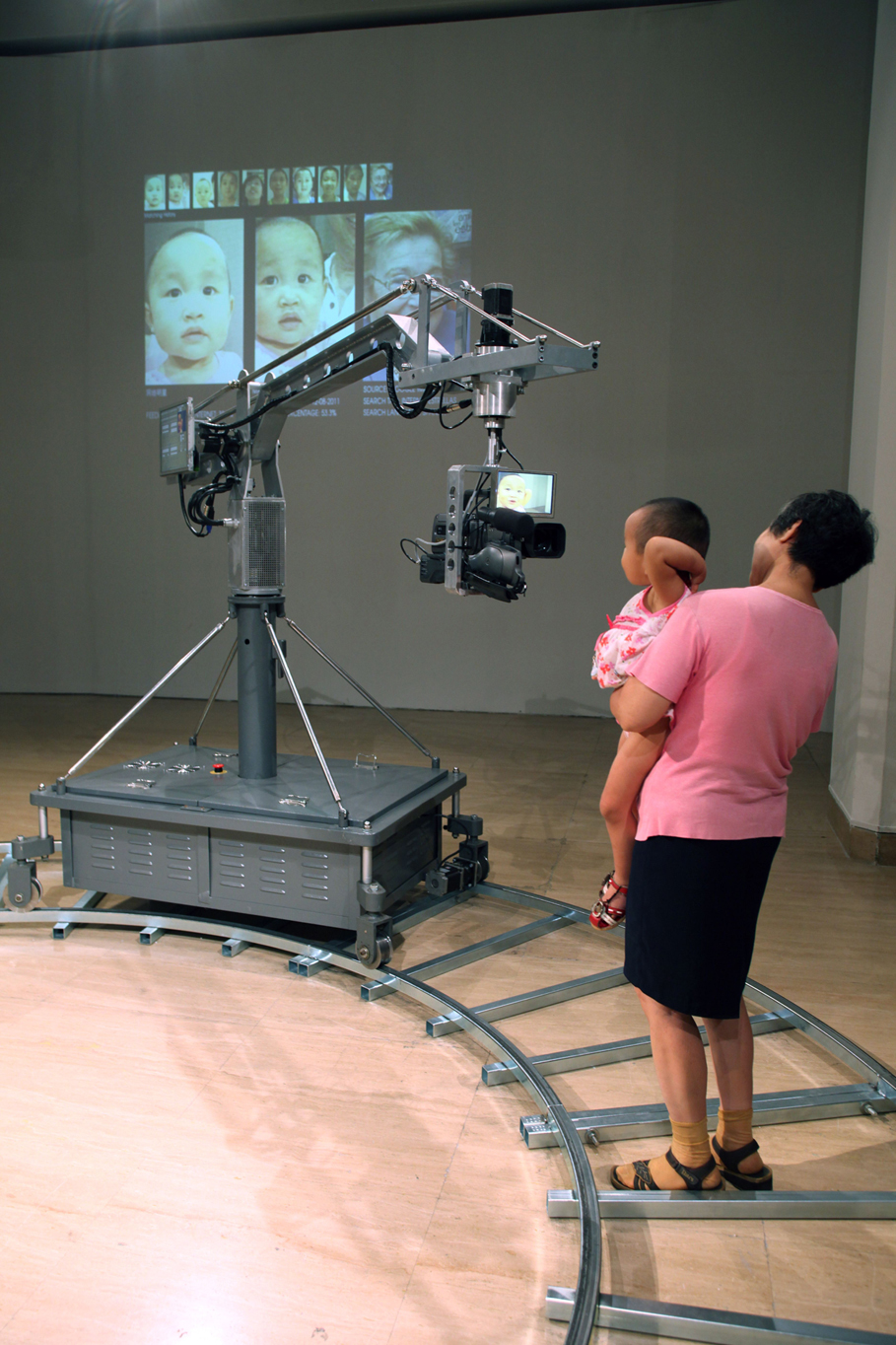
Marnix de Nijs
15 Minutes of Biometric Fame
The design of the installation 15 Minutes of Biometric Fame is inspired by the camera dollies employed in the television and cinema industries. A camera crane moves autonomously over a large circular track. In a rather intimidating manner, it points the camera at visitors in the exhibition space and scans each visitor’s facial features, comparing them to those of a vast array of preselected persons in a database.

monika horcicova
Monika Horčicová
“生命之轮”是捷克著名艺术家MonikaHorčicová创作的艺术品。艺术家最喜欢的主题之一是无限。每个人都可以与下面的工作建立链接。这里让我们感兴趣的是3D打印的使用,因为构成“生命之轮”的每个零件的确是打印机处理聚氨酯树脂(滑板轮中还有塑料制成的,还有……避孕套)的结果。我们可以很容易地欣赏到每个腿骨的渲染,这对MonikaHorčicová的艺术创作方式至关重要。由于骨头是病态的表示,它们的真实性有助于激发效果。作品高55厘米,方形59厘米,宽15厘米。 许多设计师已经开始使用3D打印,但是纯粹的美术师(将他们与使用实用工具的设计师区分开)仍然很少。但是,“生命之轮”证明了3D打印的能力,能够以较低的成本忠实地呈现精确的元素。我们还可以想到通过能够复制和拒绝同一物体的工具使李智的兔子成为可能。尽管如此,艺术和3D打印的共同点是,它们在广义上服务于思想。


Carla Gannis
Garden of Emoji Delights
Hell
FILE SAO PAULO 2015
人间愉悦花园的三联画是荷兰画家Hyeronimus Bosch最著名的作品之一。 它的历史可以追溯到15世纪末,保存在马德里的普拉多博物馆中。 表情符号花园的三联画是当代艺术家卡拉·甘尼斯(Carla Gannis)创作的版本,其中空间受到小图标的入侵,由于WhatsApp的作用,如今这些小图标已成为我们语言中越来越重要的组成部分。 这不是艺术家第一次使用表情符号,也许将它们插入现实世界中,或者将它们用作电影谜语的新象形文字片段。 卡拉·甘尼斯(Carla Gannis)的作品目前在芝加哥的Kasia Kay艺术项目画廊展出。



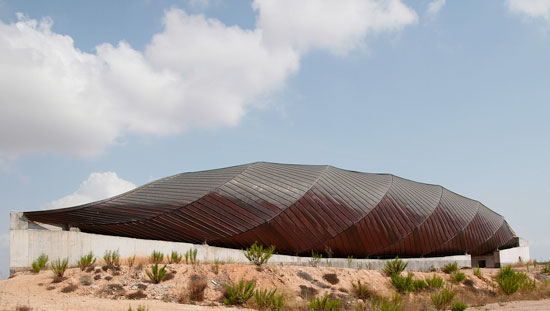
TOYO ITO
تويو ايتو
伊东丰雄
טויו איטו
伊東豊雄
도요 이토
relaxation park
o parque de relaxamento em torrevieja, no sul da espanha, projetado por toyo ito permanece parcialmente construído, com construção interrompida devido a possíveis infrações de o direito costeiro. a situação já foi destacada em uma exposição da arquiteta, nathalie gidrón, em um pub alicante, que mostra “o estado em ruínas do edifício atual” construído em a forma de um caracol de madeira e então coberto de cobre, embora o cobre tenha desaparecido e a madeira abaixo agora esteja deformada por causa da umidade. gidrón considera o edifício “uma das joias da arquitetura do século 21. a prefeitura de torrevieja modificou os planos depois que a ordem de interromper a construção foi recebidos e negaram que o projeto tenha sido abandonado. outros grupos políticos estão pedindo que a terra volte ao seu estado natural.

BRIAN ENO
Брайан Ино
브라이언 이노
ブライアン·イーノ
בריאן אינו
براين إينو
Брайан Ино
Music for Airports
Initially, he referred to these quiet soundscapes as “discreet” music, and on Discreet Music (a wry deconstruction of “Pachelbel’s Canon in D”) demonstrates his basic tools: minimal melodies, subtle textures, and variable repetition. Around this time, he had also been collaborating with the German synth duo Cluster on a pair of moody, coloristic electronic albums, selections from which may be found on the Begegnungen and Begegnungen II compilations. But it was Music for Airports that finally codified these experiments into an aesthetic, and even provided a label for the sound: ambient music.